John and Matthew are watching every single live-action film starring Meryl Streep.
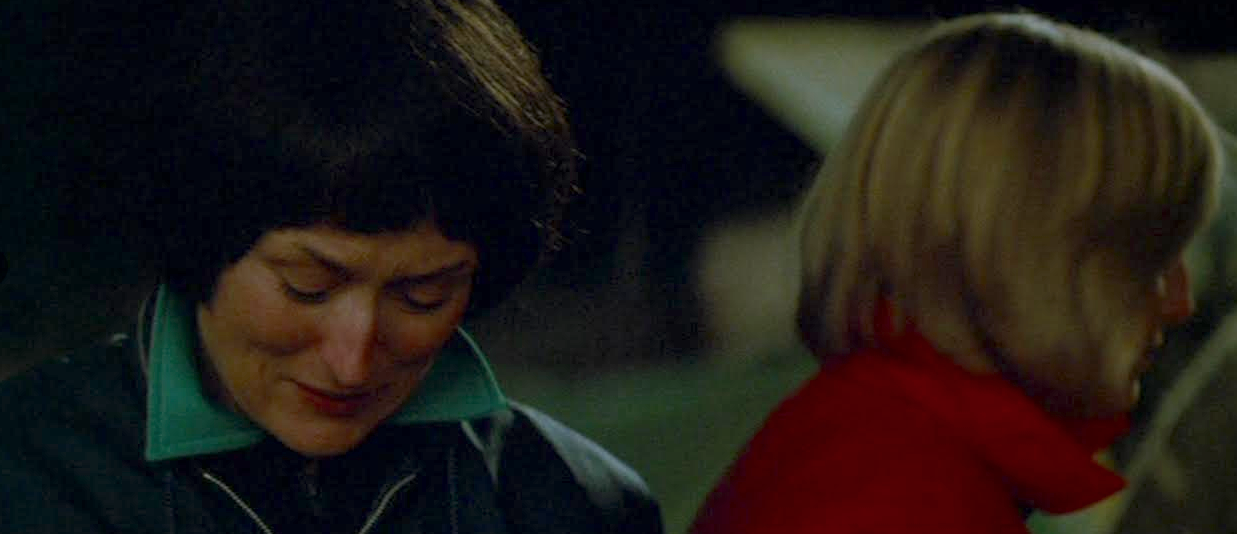
#15 — Lindy Chamberlain, a New Zealand matriarch wrongfully convicted of her child’s murder.
MATTHEW: One evening in August 1980, Azaria Chamberlain, the two month-old daughter of New Zealander couple Michael and Lindy Chamberlain, was taken while the family was camping near Ayers Rock. She was never found again. Seconds before Azaria disappeared, Lindy claimed to have seen a dingo rummaging through the tent where her daughter lay sleeping, putting forth the soon-to-be-infamous story that a dingo had taken and perhaps eaten her baby. A seedy, sensationalist media frenzy ensued, with the Chamberlains’ faces splashed across the covers of obsessive tabloids and speculative segments of nightly news programs as many, including the Australian high court, viciously questioned the veracity of the family’s explanation.
None of Meryl Streep’s vehicles have entered the cultural lexicon with quite the same measure of gleefully ubiquitous parody that has surrounded and even overshadowed Fred Schepisi’s 1988 docudrama A Cry in the Dark, also titled — and released in Australia and New Zealand as — Evil Angels after the John Bryson true-crime bestseller that first chronicled the Chamberlain family’s legal ordeal. A Cry in the Dark’s devolution into little more than a widely-known (though often misquoted) punchline has proven to be both admittedly hilarious but also fairly odd, especially considering the gruesome events from which this gag originates...
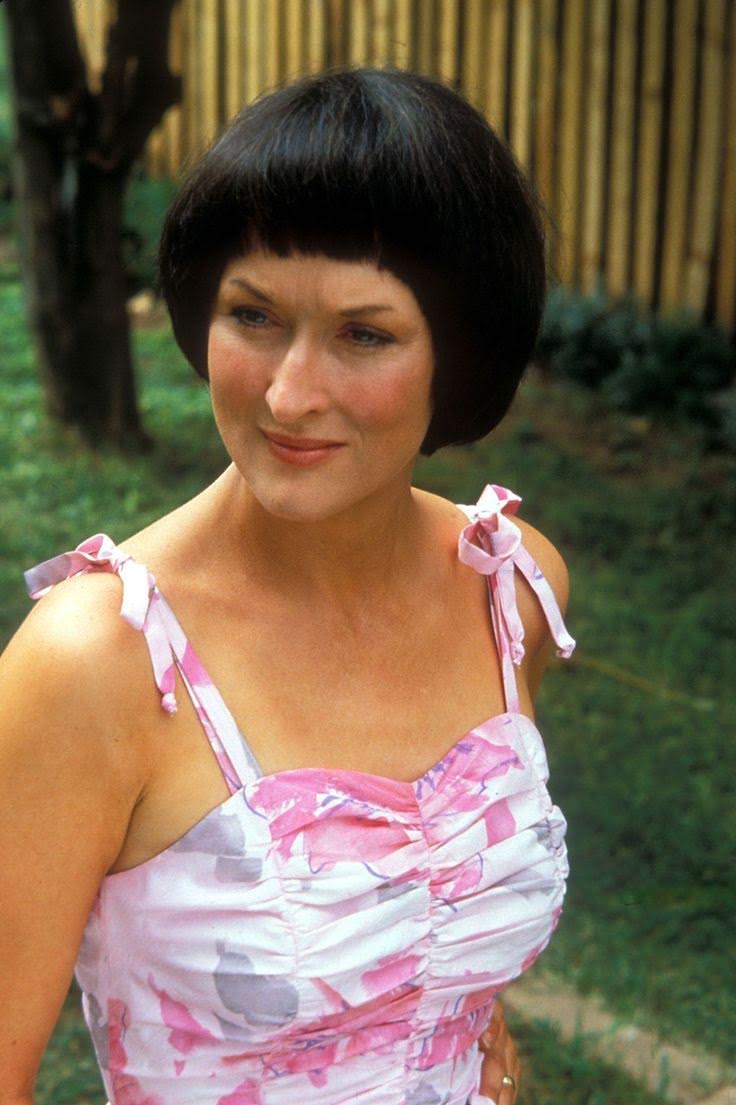 But Streep’s performance as the embattled and eventually imprisoned Lindy has survived her film’s farcical reputation (and her own helmet-hair bowl cut) largely unscathed. It was warmly received upon its debut, earning an Oscar nomination and a Best Actress prize at the 1989 Cannes Film Festival from Wim Wenders’ jury, and it’s easy to understand why. In the earliest, pre-tragedy passages of A Cry in the Dark, Streep simply decides, rather ingeniously, to play a normal family woman and thus eschews any one dominant characteristic. She’s a Seventh-day Adventist pastor’s wife who is neither a zealot nor a stick in the mud, a mother of three who is traditional and practical enough to make her children’s clothing but particular enough to dress her newborn daughter in off-putting gothic black because, as she sweetly puts it, she just likes the color. When the film soon arrives at Azaria’s demise, Streep wipes away any instinct one might have to snigger at all the extensive dingo-mentioning by diligently and distressingly playing this sequence — and its grief-stricken aftermath — as the traumatic horror show it is.
But Streep’s performance as the embattled and eventually imprisoned Lindy has survived her film’s farcical reputation (and her own helmet-hair bowl cut) largely unscathed. It was warmly received upon its debut, earning an Oscar nomination and a Best Actress prize at the 1989 Cannes Film Festival from Wim Wenders’ jury, and it’s easy to understand why. In the earliest, pre-tragedy passages of A Cry in the Dark, Streep simply decides, rather ingeniously, to play a normal family woman and thus eschews any one dominant characteristic. She’s a Seventh-day Adventist pastor’s wife who is neither a zealot nor a stick in the mud, a mother of three who is traditional and practical enough to make her children’s clothing but particular enough to dress her newborn daughter in off-putting gothic black because, as she sweetly puts it, she just likes the color. When the film soon arrives at Azaria’s demise, Streep wipes away any instinct one might have to snigger at all the extensive dingo-mentioning by diligently and distressingly playing this sequence — and its grief-stricken aftermath — as the traumatic horror show it is.
As A Cry in the Dark progresses, Schepisi and co-writer Robert Caswell widen the story’s scope to encompass the reporters, prosecutors, and everyday Australians who exist outside the Chamberlains’ inner circle, taking up a frenetic, panoramic approach that provides vivid flashes of character rather than sustained immersion. Streep has always excelled more in the latter mode, but she uses her screen time ideally, refusing to make Lindy easy to warm to, either for us or for those around her, including the ones who hold her nearest and dearest. Even in the wake of loss, she still positions Lindy as an ever-pragmatic matriarch, whether she’s weighing the implications (or maybe just the personal toll) of allowing a Woman’s Day reporter into her home or expressing muted gratitude that her son’s bloody jacket won’t need to be taken in as evidence because it’s the only one he owns. Streep can plainly communicate Lindy’s ambivalence around that cunning tabloid hound (coolly played by Deborra Lee-Furness, aka Mrs. Hugh Jackman) with just a few well-placed shifts in her gaze, and the economy of her playing ultimately comes to match the overall concision of the film’s structure. So there’s definitely much to admire in Streep’s performance, although I must admit that it’s not one I find myself often returning to. Maybe it’s the erratic, amped-up nature of Schepisi’s filmmaking, but I can never recall A Cry in the Dark, or Streep’s work therein, with the same crystal-clear clarity with which I immediately remember Sophie’s Choice or Silkwood. But what’s your stance on the notorious Lindy Chamberlain?
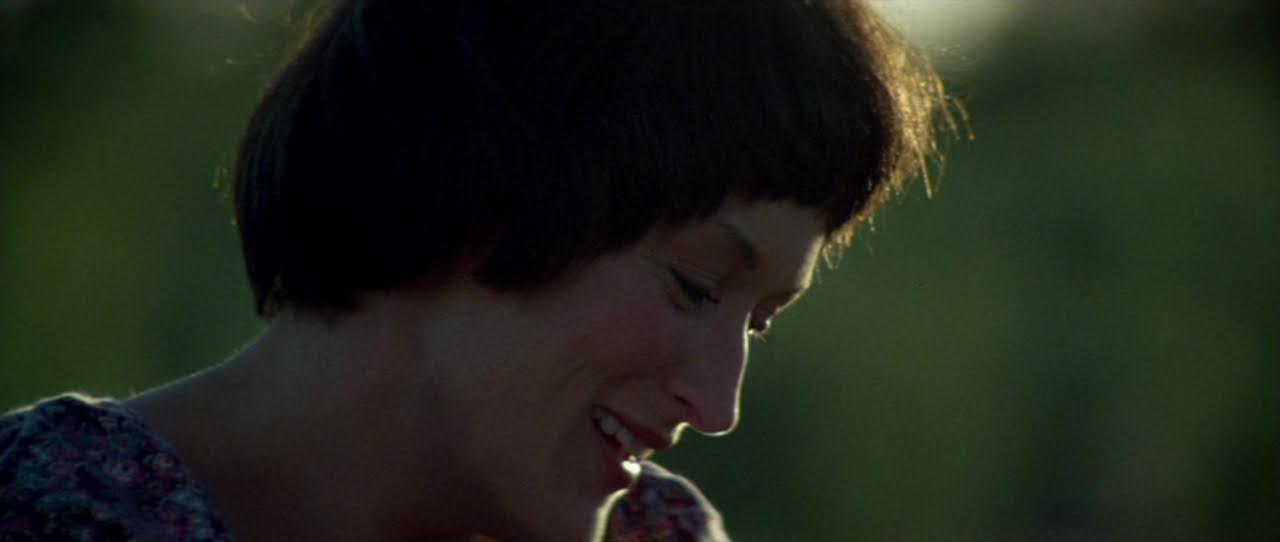
JOHN: A Cry in the Dark strikes me as Exhibit A for (misguided) critics who accuse Streep of being technically perfect but emotionally bankrupt. A lazy and frankly misogynist critique, “emotional distance” or internalized expression or any sort of actorly withholding is a strategic and deliberate choice here, and in other Streep performances, that asks the viewer to lean into and study the character rather than be spoon-fed some easy idea about this woman. Screen acting is never mere representation, and actressing especially often operates from a place of both representation and interrogation. If you’ll allow me to go out on a meta limb here, Lindy Chamberlain is a performance by an actress both inhabiting the role while also responding to the media image of Lindy Chamberlain that had already been created and which ultimately led to her imprisonment. Streep spins many plates in A Cry in the Dark, but perhaps her most impressive feat is her absolute refusal to soften Lindy into a saccharine symbol, choosing instead to double down on yet another difficult woman in her intrepid repertoire. In so doing, Streep recuperates Lindy from tabloid fodder while testing the viewer’s empathic capabilities.
After making remoteness utterly devastating in Ironweed, here Streep makes remoteness downright terrifying, once again executing a total physical (and vocal) transformation entirely in service to her character. I’m of the mind that a viewer never forgets the actor they’re watching onscreen, and that’s perfectly fine. When actors transform, they inevitably bring themselves to the character. Chameleonic Meryl occasionally has traces of Real-Gal Meryl or Whip-Smart Meryl or just plain Meryl-Meryl, but Lindy Chamberlain’s disquieting calm and eerie remove is perhaps the closest I’ve come to ever “forgetting” the actress underneath. Rather than work to fill in the blanks of an underwritten part or breathe life into an abstraction, Streep must simultaneously alienate and compel the viewer by playing all the abrasive and iron-willed reserve that indicted Lindy while inviting sympathy with such a headstrong strange woman. This extremely challenging task is, of course, matched by Streep’s staggering talent, put to use here like an athlete playing a charity game. In this joyless and often taxing film, there is immense pleasure in simply witnessing Streep pull off this first-rate performance.
Lindy Chamberlain is clearly a fierce queen and goth hero, something about her work here doesn’t ignite the same passion I maintain for other early peaks — and I get that this may be entirely purposeful. An unusual performance in many respects, I’m pressed to recall a scene or moment that captures the essence of Streep’s Lindy. What’s her “Oscar clip”? The obvious answer is her testimony, where she conveys the gruesome details of the incident with utmost clarity and discomfort. “We’re talking about my baby daughter,” she says, voice cracking and eyes tearing, before steeling herself to declare, “not some object,” allowing herself just a few syllables of indignation. In lieu of a clip, I’d rather put together a montage of Lindy hiding from the press, undisguised in bulky black sunglasses and ducking from cameramen like a true-blue celebrity. What other scenes stand out for you in Streep’s performance?
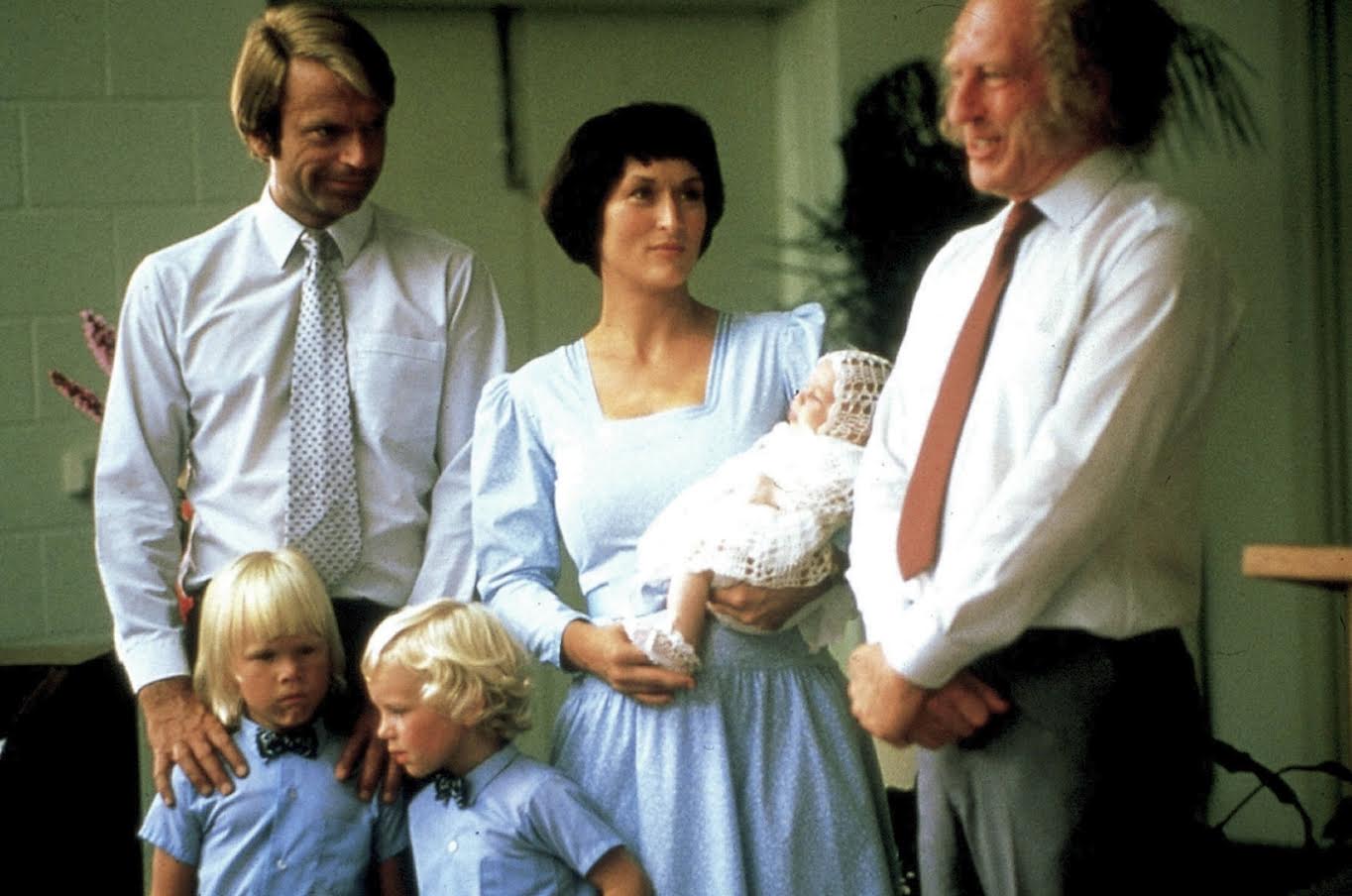
MATTHEW: “You can crack walnuts on her face,” a fleeting, at-home commentator remarks about Lindy midway through the movie. Have Streep’s features ever been morphed so severely? That pinched face with its pointy nose and thin, perpetually-arched brows would seem to prohibit any and all signs of levity, which is why it’s invariably surprising, upon each rewatch of A Cry in the Dark, just how much gaiety Streep manages to sneak into the performance. I relish Lindy’s airier moments of giggling, goosey abandon that reveal a healthy and often self-deprecating sense of humor that can evidently not be contained: burying her chuckles at a bumbling reporter who topples backward during a visit to the campsite where Azaria disappeared; making light of a bomb threat that she inadvertently predicted at the hotel she and her husband Michael (Sam Neill) are stuck in; or howling with incredulous laughter at a woman who hurls a loogie into the telephone booth in which she’s making a call.
Streep also gains a most worthy acting counterpart in Neill, a robust and underrated actor who has always been willing to play second and even third banana in stories that are fundamentally female-focused, from My Brilliant Career to A Cry in the Dark to The Piano. Neill casually sells Michael’s religious conviction early on, but it’s his spiking exasperation with his faith, his wife, and his country’s judicial system that makes for some of the film’s more forceful scenes. Michael’s explosive outbursts and muddled breakdowns position Streep as a witness and allow her to turn the quieter modes of watching and listening into active and compulsively watchable behavioral choices. This isn’t to say that Streep doesn’t ever resort to histrionics: she goes big and weepy during a lacerating argument with Michael that transpires halfway through the trial in their dingy, temporary living quarters, exposing the discomfiting fissures of this seemingly solid union. (In reality, the Chamberlains split up in 1991, five years after Lindy was released from prison.) But the occasional histrionic is far more preferable than dewy sentimentality, which, I agree, Streep steers clear of altogether. She manages to maintain Lindy’s steeliness but shuns garish caricature, even in the dramatic incidents that appear to beg for some imperious Dragon Queen flourishes. But Streep, by and large, refrains from such overemphasis. She can scoff, stare daggers, and roll her eyes at the prosecution’s admittedly insufferable forensics expert, who has also stolen Lindy’s haircut, and still sell these actions as those of a credible but infuriated human being, as opposed to the vindictive virago that the mainstream press would like her to embody.
Streep and her fellow filmmakers stand in firm opposition to the ingrained misogyny that quickly came to define the media circus that encircled the Chamberlains both during the hearings and in their ongoing aftermath. (The case has been reopened as recently as 2011.) Although its sum total is far less galvanizing, A Cry in the Dark’s thematic interests are not too distant from those of American Crime Story: The People v. O.J. Simpson, another compassionate retrieval of a reluctant female media fixture’s maligned legacy. Streep’s measured, many-sided characterization refuses to let Lindy be defined by her grief, but it also avoids heroizing her hardships as a more self-aggrandizing performance might have been inclined to do. Besides, Streep carefully demonstrates Lindy’s virtues at her own pace. By the time Lindy is being hauled off to prison (a ruling that emotionally undoes Michael more than anyone), Streep has steadily established her as the sturdy backbone of this familial unit, not through any explicit proclamations but through the tacit vigilance with which Lindy safeguards her brood. Such modest playing is far more authentic than the emotional bold strokes that are the dubious hallmarks of these ripped-from-the-headlines bio-dramas. Consider Lindy’s reunion with her family, including the daughter she gave birth to while incarcerated, an exchange that one envisions being written with the warm, salty tears of audiences. Streep doesn’t indulge this already soft-hearted set-up, opting instead to wisely assure her daughter, who shrinks away from the mother who is all but a stranger to her, that they will have plenty of time to bridge the divide that her conviction has forced. By privileging tough-minded truth over ephemeral schmaltz, Streep humblingly imparts that the lives the Chamberlains lived before can never be returned to, but that healing is possible, if not easy.
JOHN: “I'm told, ‘Don't talk like you normally talk. Watch how you hold your mouth. You look too sour and crabby. Don't get angry. Don't ask too many questions, or they think you're trying to be smart. And never, never, never laugh or you're an uncaring bitch.’ Well, I can't cry to order, and I won't be squashed into some dumb act for the public ... or for you,” Lindy declares on the stand. It’s not hard to read Lindy’s refusal to perform some 'dumb act for the public' as closely related to Streep’s own determination to discover all the rough edges and unpalatable qualities of difficult characters. These courtroom scenes, though Lindy’s most public moments, stand out as the most concentrated and intimate time we spend with Lindy and her private thoughts. Additionally, we are granted a rare, sustained close-up of Lindy as she defends herself, which contrasts with how Lindy is usually framed as just one of many, the camera carefully keeping its distance whether in a motel or in her home, sharing affection with her husband.
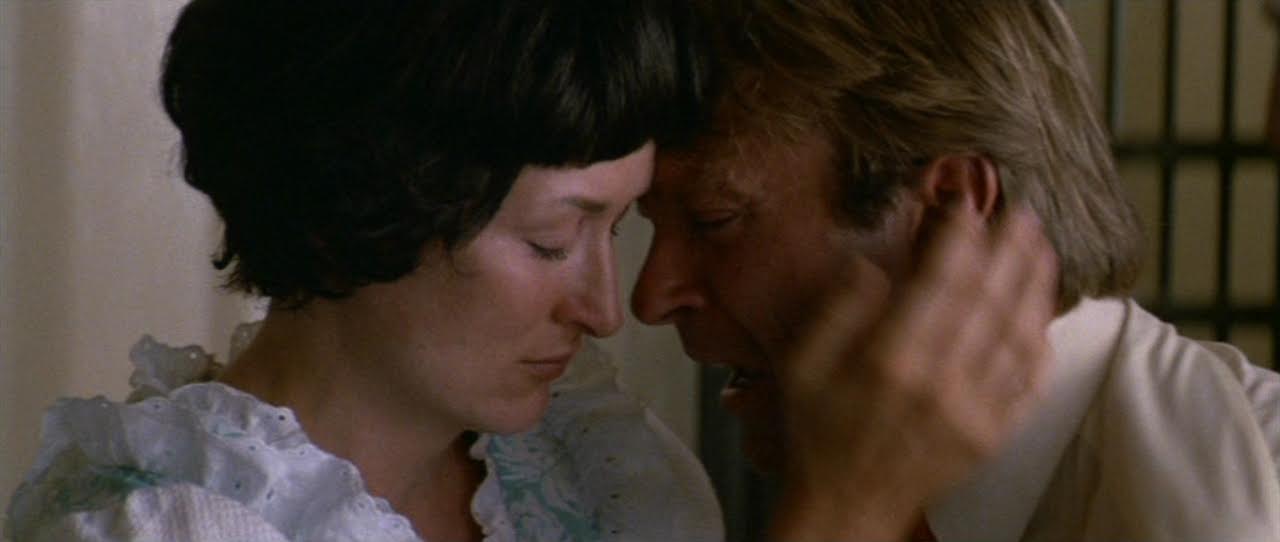
Such tactical moves underscore Schepisi’s decision to scale back and unsettle an audience’s expectation of “getting to know” the characters we see on screen. In this respect, both Schepisi and Streep work hard to keep Lindy at an immense remove from our scrutiny, rebuffing the insatiable hunger for fallacious gossip and invasive copy that led to her sentence. By the end of A Cry in the Dark, Lindy Chamberlain remains an aloof figure. My gut reaction is to criticize films that fall short of painting a full picture of the characters they spend hours observing, but A Cry in the Dark, and its centerpiece performance, make such detachment puzzling and purposeful.
